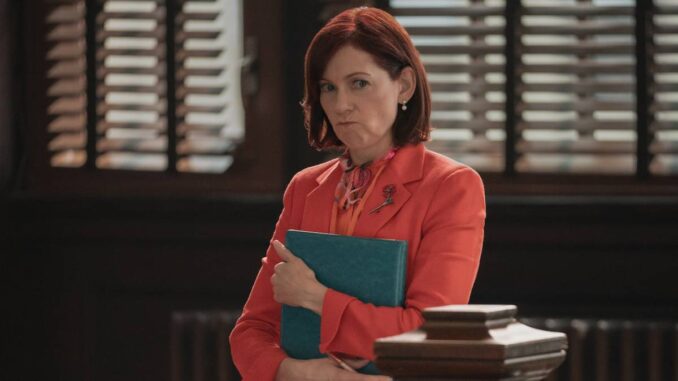
A Macabre Masterpiece Marred: Elsbeth’s Creative Murder and Persisting Flaws in Season 3 Episode 7
Elsbeth Tascioni, the delightfully eccentric lawyer with a penchant for observation and a wardrobe seemingly pulled from a vibrant kaleidoscope, has carved a unique niche in the crime procedural landscape. Her spin-off series, now in its third season, continues to charm with its quirky humor and unconventional approach to solving mysteries. Episode 7 undoubtedly delivered a murder that was audaciously creative, a feat of theatrical malice that genuinely surprised. Yet, beneath the gleaming surface of its inventive crime, the episode, like much of this season, was plagued by the same flaws that have hampered its potential.
The episode’s core strength lay in its elaborate and theatrically-minded murder. A renowned stage director, infamous for his ruthless perfectionism, meets his demise in a way that can only be described as performance art gone horribly wrong. Think elaborate contraptions, meticulously planned misdirection, and a denouement worthy of a twisted grand finale. The sheer audacity of the murder, the level of intricate planning required, elevated it beyond the mundane and into the realm of a truly memorable crime. The reveal of the method was a moment of genuine satisfaction, a reward for following Elsbeth as she pieced together the puzzle with her intuitive, albeit often tangential, logic.
However, this spark of creative brilliance was ultimately dimmed by the repetitive issues that have haunted this season. Foremost among these is the pacing. While Elsbeth’s meandering thought process is part of her charm, the episodes often drag, lingering on inconsequential details while rushing through crucial plot points. In Episode 7, this was particularly noticeable in the lengthy scenes focusing on Elsbeth’s personal anxieties about fitting in with the “cool kids” at the precinct. While these moments offer glimpses into her character, they ultimately felt like filler, detracting from the momentum of the central investigation.
Furthermore, the supporting characters, particularly Kaya Blanke, continue to feel underdeveloped and underutilized. While Kaya is ostensibly Elsbeth’s partner, her role often feels relegated to that of a sounding board, rarely contributing significantly to the investigation. Her interactions with Elsbeth lack the genuine spark and camaraderie that defined the dynamic between Elsbeth and her previous counterparts. In Episode 7, Kaya’s presence felt almost obligatory, a missed opportunity to explore her perspective on the theatrical world in which the murder unfolded.
Another persistent flaw is the reliance on predictable red herrings and overly convenient plot devices. The suspects in Episode 7, while possessing compelling motivations, were ultimately too easily dismissed. The investigation often felt like a series of forced detours, delaying the inevitable revelation of the true culprit. This predictability undermines the tension and suspense, leaving the viewer feeling more like a passive observer than an active participant in the unfolding mystery.
Finally, the resolution, while satisfying in revealing the “how” of the murder, lacked the emotional resonance that characterized earlier seasons. The motive, while understandable, felt somewhat generic and failed to fully explore the complexities of the victim’s relationships. The episode lacked a truly poignant moment, a final twist that would leave the viewer contemplating the darker aspects of human nature.
In conclusion, Episode 7 of Elsbeth Season 3 showcases the series’ potential for brilliance. The creative and audacious murder undoubtedly stands out as a highlight, a testament to the writers’ ability to craft compelling and imaginative crimes. However, the episode, like the season as a whole, suffers from persistent flaws in pacing, character development, and narrative predictability. While Elsbeth’s unique charm continues to captivate, the series needs to address these issues to truly recapture the magic of its earlier episodes and deliver a consistently engaging and thought-provoking viewing experience. Until then, we are left with a macabre masterpiece, sadly marred by its own imperfections.
